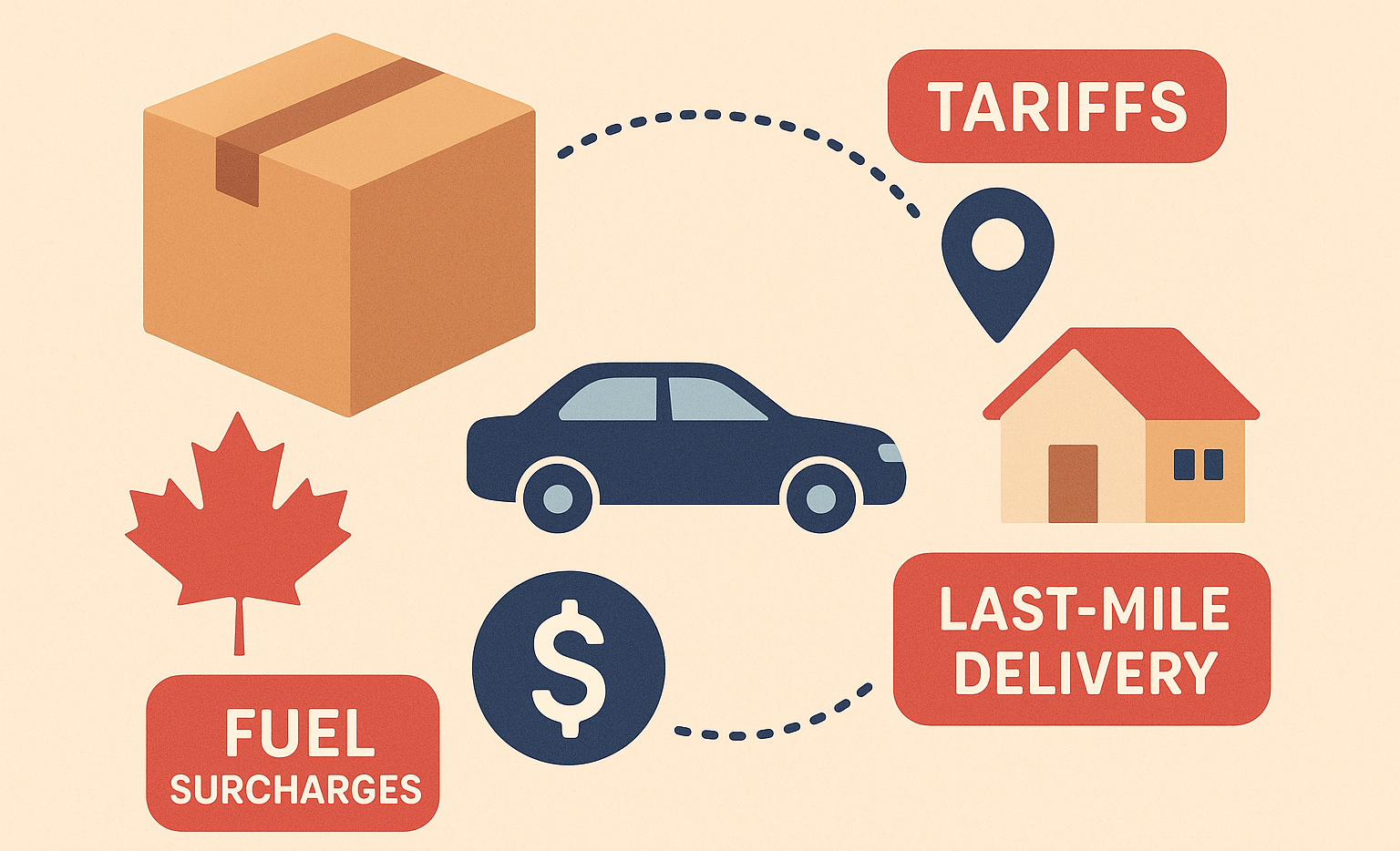
Canadian consumers are feeling the pinch when it comes to online shopping and parcel delivery. Rising prices aren’t just a result of inflation—they’re the product of multiple cost pressures, from import tariffs to fuel surcharges in the final stages of delivery. Understanding the full shipping chain reveals where these added costs are coming from, and why they’re unlikely to disappear soon.
The Shipping Chain: From Manufacturer to Your Door
Every product’s journey from factory to front porch passes through several cost layers:
- Manufacturing & Export – Goods are produced overseas and priced based on local labor, materials, and currency exchange rates.
- International Transport – Carriers ship goods via ocean freight or air cargo to Canadian ports, with costs tied to fuel prices, freight capacity, and seasonal demand.
- Customs & Tariffs – At the border, imported goods may face tariffs, duties, and customs brokerage fees, depending on their category and country of origin.
- Domestic Distribution – Once cleared, goods move to warehouses and fulfillment centers, incurring trucking or rail fees, storage costs, and handling charges.
- Last-Mile Delivery – The final leg from a distribution hub to the customer’s door—often the most expensive per unit distance—relies on couriers or postal services.
Where the Added Costs Appear
- Tariffs at the Border – Canadian tariffs vary by product type and trade agreements. Even with free trade deals, certain goods face duties due to supply management policies or protective measures. These charges are passed down to importers and ultimately to consumers.
- Fuel Surcharges – Both long-haul freight and last-mile carriers apply fuel surcharges that fluctuate with global oil prices. Rural and remote deliveries can see higher surcharges due to the extra distance and lower delivery density.
- Carrier Capacity and Labor Costs – Shortages of drivers, warehouse workers, and delivery staff have pushed wages upward. With e-commerce volumes still high, carriers raise rates to balance demand with available capacity.
- Infrastructure and Compliance Fees – Urban congestion charges, carbon pricing, and provincial regulations add incremental costs to transport and delivery operations.
- Last-Mile Delivery Premium – Delivering to dispersed addresses—especially outside major cities—costs significantly more per package than bulk shipments to retail stores. The cost is amplified by customer expectations for fast delivery, which reduces the ability to consolidate routes.
Why These Costs Are Rising in 2025
Several trends are converging: geopolitical tensions are leading to new tariffs; fuel prices remain volatile; Canadian urban centers are introducing more environmental fees; and rural delivery demand is growing. Carriers are also investing in automation and electric fleets—costs that may be partially recovered through higher rates.
The Bottom Line for Businesses and Consumers
For retailers, absorbing these costs means slimmer margins; passing them on risks losing price-sensitive customers. For shoppers, understanding the breakdown can explain why delivery fees are increasing even when base product prices stay the same.
In Canada’s current shipping climate, the combination of tariffs and last-mile challenges means higher delivery prices aren’t just temporary—they’re part of a longer-term shift in how goods reach your door.
